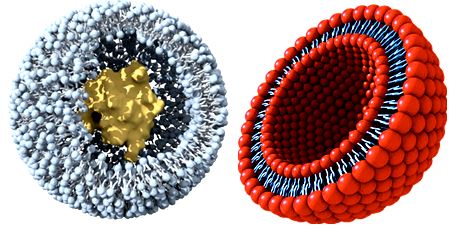PHARMACOSOMES: AN UPDATED REVIEW
Keywords:
Pharmacosomes, amphiphilic, targeted drug delivery system, biosomes, phospholipids, bioavailabilityAbstract
Different lipid based vesicular systems have been developed as controlled and targeted drug delivery systems. Pharmacosomes are novel vesicular drug delivery systems. They are potential alternative to conventional vesicles. Pharmacosomes are the amphiphilic phospholipids complexes of drugs bearing active hydrogen that bind to phospholipids. Similar to other vesicular systems pharmacosomes provide an efficient method for delivery of drug directly to the site of infection, leading to reduction of drug toxicity with no adverse effects. They also reduces the cost of therapy by improving bioavailability of medication, especially in the case of poorly soluble drugs. This approach as a drug delivery system certainly promises a reliable, safe, selective and precise method of drug delivery. They help in controlled release of drug at the site of action as well as in reduction in cost of therapy, drug leakage and toxicity, increased bioavailability of poorly soluble drugs, and restorative effects. They are mainly prepared by hand-shaking and ether injection method. The Pharmacosomes have evaluated for different parameters such as size, surface morphology and in vitro release rate. This article reviews the potential of pharmacosomes as a controlled and targeted drug delivery systems and highlights the methods of preparation and characterization.
Peer Review History:
Received 3 December 2016; Revised 8 January 2017; Accepted 14 February, Available online 15 March 2017
Academic Editor:
Dr. A.A. Mgbahurike , University of Port Harcourt, Nigeria, amaka_mgbahurike@yahoo.com
, University of Port Harcourt, Nigeria, amaka_mgbahurike@yahoo.com
Reviewer(s) detail:
Dr. Emmanuel Olorunsola , Department of Pharmaceutics & Pharmaceutical Technology, University of Uyo, Nigeria, olorunsolaeo@yahoo.com
, Department of Pharmaceutics & Pharmaceutical Technology, University of Uyo, Nigeria, olorunsolaeo@yahoo.com
Dr. Heba M. Abd El-Azim , Damanhour University, Egypt, h_m_abdelazim@hotmail.com
, Damanhour University, Egypt, h_m_abdelazim@hotmail.com
Downloads

Published
How to Cite
Issue
Section

This work is licensed under a Creative Commons Attribution-NonCommercial 4.0 International License.










 .
.